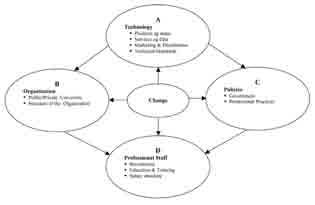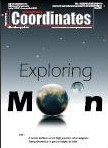
Galileo and China’s Compass argue over frequencies
The Christian Science Monitor reports that China’s insistence on using the same radio frequency as Galileo may render some features of the European system unusable in the event of a crisis. China’s membership of “Galileo,” has soured to the point where the two sides are locked in a dispute over radio frequencies, as China races ahead with its own network of satellites. Without an agreement, China would be able to frustrate European military forces’ efforts to deny a future enemy crucial satnav capability. http://survapedia. com/2009/03/galileo-china-argue/
April 2009
GEO Siberia 2009
21-23 April
Novosibirsk, Russian
nenash@sibfair.ru
http://www.geosiberia.sibfair.ru
Defence Geospatial Intelligence Middle East
26 – 29 April
Dubai
enquiry@iqpc.ae
http://www.geospatialdefence.com
May 2009
ENC-GNSS 2009 )
3-6 May
Naples, Italy
http://www.enc.gnss09.it
International Conference on Integrated Navigation Systems
25-27 May
Saint Petersburg, …

Till almost early seventies, Survey of India was synonymous with the surveying profession in India. That situation does not exist any more. The reason is not far to find out… Many new organizations, have carved out their own niche in the domain of the surveying and mapping. These new entities have been generally propelled either by the new technology eg satellite imagery or due to unmet demand of a particular type of information – example, Forest Survey of India…

Because of the MEMS inertial sensors being more and cheaper, most studies focus on their applications. It is known that the simple principle and construction of the MEMS accelerometer make it is possible to improve the performance of MEMS accelerometers faster than that of gyros, so most efforts are done to use only the linear accelerometers forming the IMU called IMU-BA which has the potential market in the land and air navigation system, such as the car…

Exploring the moon in three dimension
P K Srivastava, B Gopala Krishna and Amitabh
A sensor architecture for high precision UAS navigation
Luca Garbarino, Vittorio Di Vito, Ettore De Lellis, Carmine Marrone, Federico Corraro
Calibration Method of IMU Based only accelerometers
Wu Junwei
Taking Geomatics to greater heights in India
P Misra

GeoEye sign reseller contracts. Beijing Earth Observation reseller in China
GeoEye, Inc. has signed agreements with several international resellers to provide high-resolution, satellite imagery and value-added products from its new GeoEye-1 Earth-imaging satellite to customers in China, Middle East, Turkey and Russia. Beijing Earth Observation, China has signed a new agreement with GeoEye to receive data from the GeoEye-1. www.geoeye.com

Indian NSDI publishes Metadata Standards ver 2.0
The National Spatial Data Infrastructure (NSDI), under Department of Science & Technology of Government of India, has released Metadata Standard 2.0. It is prepared by the working group on ‘Metadata Standards’ chaired by Dr. S K Pathan, from Space Applications Centre (SAC), ISRO, Ahmadabad. The National Natural Resources Management System (NNRMS) Metadata Standards defines the schema and design for the NSDI Metadata. It also contains a set of relational tables that standardise the layer metadata, the geographic search metadata, the access metadata etc.
Metadata is the first element of the NSDI, which enables a user to find spatial data that is available in different NSDI Agency servers. It serves two major purposes – both for the spatial data generator and for the spatial data user. For the generator, it provides a framework to document the spatial data and declare its content for users. For the user, it serves many important purposes, including finding the spatial data as per need; browsing spatial data; deciding on whether the spatial data will meet the application need and finding how the spatial data can be accessed.
ISRO, with the involvement of Survey of India, National Informatics Centre, Geological Survey of India, Forest Survey of India, National Bureau of Soil Survey and Land Use Planning, National Atlas and Thematic Mapping Organisation, Central Ground Water Board, Central Water Commission and the private sector, has led the effort of defining a ‘National Metadata Standards’. http://www.nsdiindia.gov.in

Obama proposes terminating system that backs up GPS
In his fiscal 2010 budget, President Obama killed funding for a system that would back up the much relied on GPS if it failed, despite calls from the telecom industry and federal agencies that it is needed. The Homeland Security Department (DHS) endorsed Loran-C a year ago as a backup for the satellite-based GPS, but in its fiscal 2010 budget, the department zeroed out funding for the system. www.nextgov.com












 (5.00 out of 5)
(5.00 out of 5)